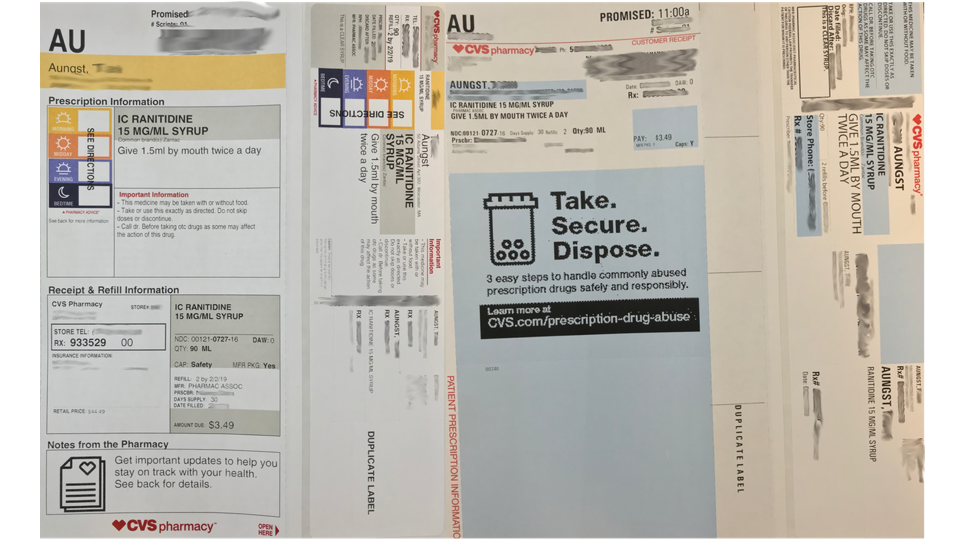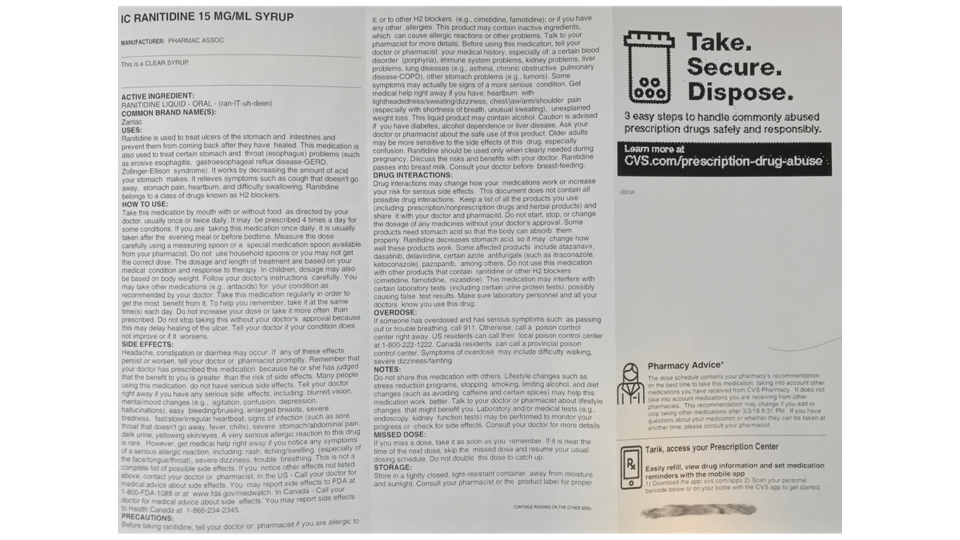Article
CVS New Medication Labels Offer Improvement
Author(s):
When these are hard to navigate and read, it can lead to nonadherence or other issues for patients, but this is a step in the right direction.
Recently, I heard that CVS is in the process of updating its prescription labels, and I thought I would do a comparison of its new and old labels. Prescription labels have been decried for years as a poorly designed piece of vital health information for patients, primarily because their tiny print makes them hard to read. TED speaker Thomas Goetz has tackled this topic and was spotlighted by The New York Times Magazine for his vision of what a drug label should look like, which is a welcome change of thought from someone outside the industry.1
I have never worked for CVS and only served as an intern for Happy Harry's/Walgreens, Target (pre-CVS), Walgreens, and an independent pharmacy. But I have always been critical of labels and patient drug information sheets, and I have always thought that pharmacies could do better. I like what Target did with the ClearRx vials that it used to dispense medications, as these definitely gave more information for patients to help with thesafety aspects of organizing and taking their drugs. Yet, I found the process to be cumbersome for high-volume days and the whole thing felt like folding origami at the end of the day. Nonetheless, I always expected CVS to use some of the elements of Target's label and color-coded bottle system, because I assume that it gained the patent rights with its acquisition of Target's pharmacies.
One thing I have heard that CVS is aiming for with its labels is increased clarity and a new pharmacy advice component that would recommend when a patient should take their medications.
So, let's do a comparison between my son's Ranitidine prescription pre- and post- new labels, shall we?

Overall Look
One thing that I like about the new labels is that there is a better color spectrum. The old label was black, blue, and shades of red. Most of the script was capitalized, which, from a design aspect, makes it hard for a patient to know where to look. In this case, the new label uses more grays and yellow to highlight sections and boasts a smarter use of typography. For instance, there is a more intelligent use of capitalized text, such as drug names, and different type sizes, which makes everything easier to follow.
Bottle Label
The old CVS label is smaller width-wise compared with the new label, by about half an inch. CVS used the added space to organize the information much better, making it easier for patients to identify the information that they need, such as amount of prescription and refills, names, and phone number, by grouping them. There are 2 items that stand out to me, including a better layout for "important Information." The other item is the organization of medications split into morning, midday, evening, and bedtime. Now, my understanding is that the pharmacist should be able to add this in and a check mark will appear, which I did not have done, in this case. Perhaps the only criticism I have about the new label versus the older one is that the name on the bottle label probably should have been boldface or made larger. It is much more prominent on the previous label. The other item, which I think would have been cool, because CVS is adding colors to labels, is to highlight the name with color, to distinguish bottles between family members or CVS customers in the same household. For example, my color would be red, my wife's blue, and my son's could be yellow.
Bag Label
Like the bottle label, the bag label incorporates everything that CVS changed with its new label and has the frequency and when to take the medication prominently displayed. Most patients throw this away, but I think the one thing that stood out to me was the billing information. The old label had the information spread out, making it hard to find, and only really mentioned the amount the patient paid. The new label has this better displayed, and it also compares the insurance and retail price. In an era where there has been much criticism about price transparency, this is an excellent addition.

Drug Information
This is one of the best changes. The new label has a better look and is overall more comfortable to read compared with the old label. Patients practically need a magnifying glass to read the old one. The new label is reminiscent of a drug information page from an online resource, and the typography change is a welcome addition. The old typeface made for a tight squeeze, but the new one is better spaced.
Overall, this is a good change for CVS. What stands out is the push toward helping patients know when to take their medications, which hopefully helps with adherence. If this is built further into CVS' system, it could help the company push for more use on its mobile application to help patients remember when to take their medications. The issue will be spacing certain meds from each other (eg, levothyroxine). This could be a move to build into a voice assistant device (eg, Alexa or Siri) that merges with a pharmacy app to tell patients to take their medications. Another feature potentially on the horizon is the ability for patients to defer some of this information being handed to them in favor of just getting it through the CVS app, though this would vary according to laws and regulations.
Reference
1. Antonelli P. Look again: Six designers take on some of the world's toughest redesign challenges. The New York Times Magazine. nytimes.com/interactive/2016/11/13/magazine/design-issue-redesign-challenge.html?_r=0. Published November 10, 2016. Accessed March 9, 2018.





